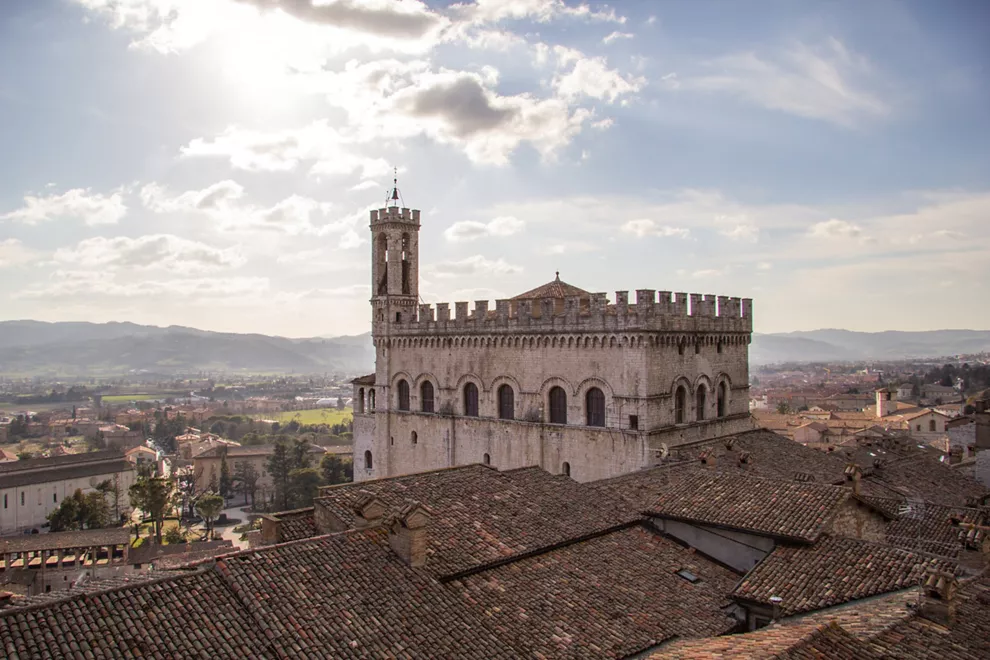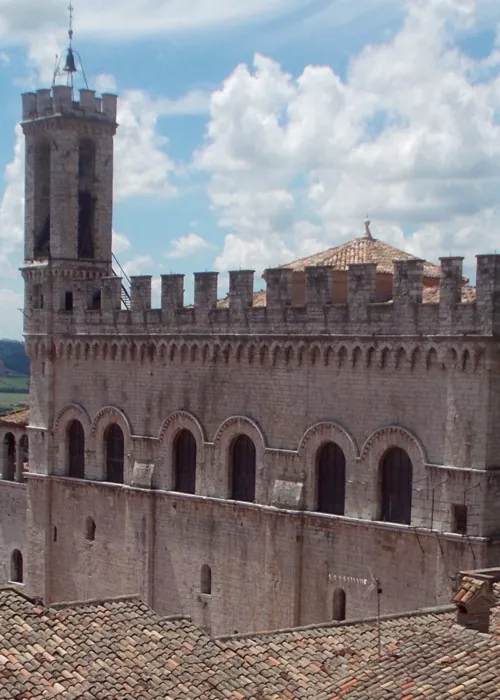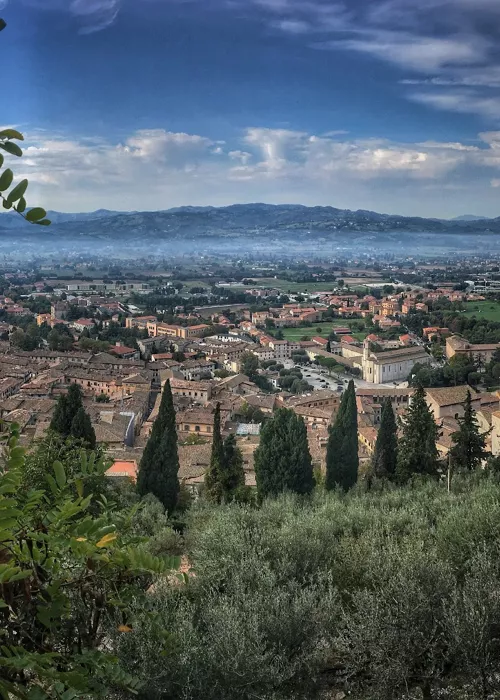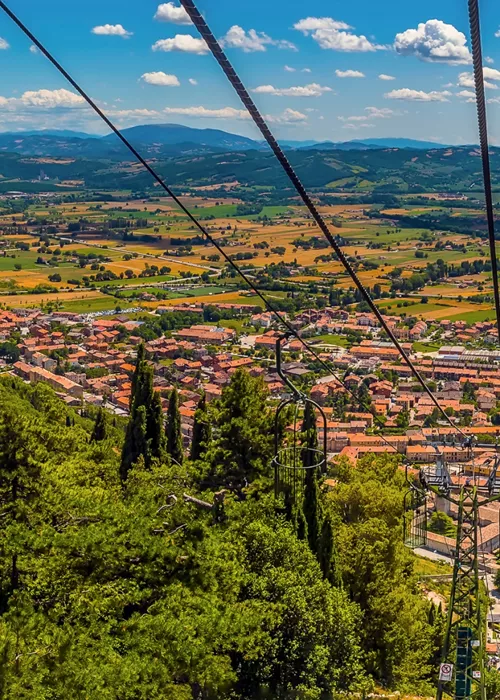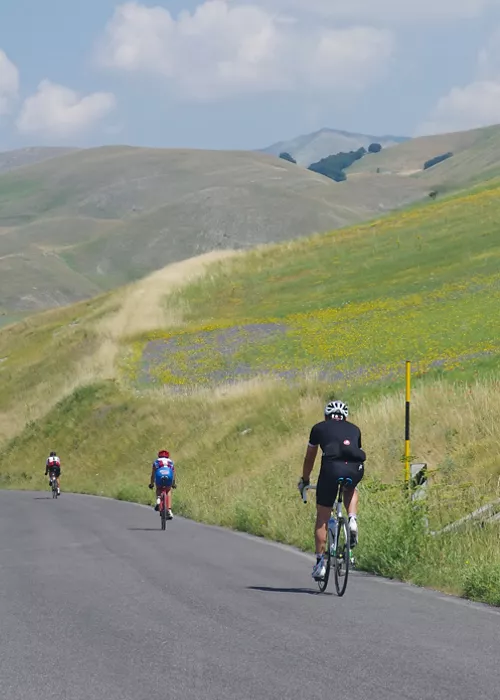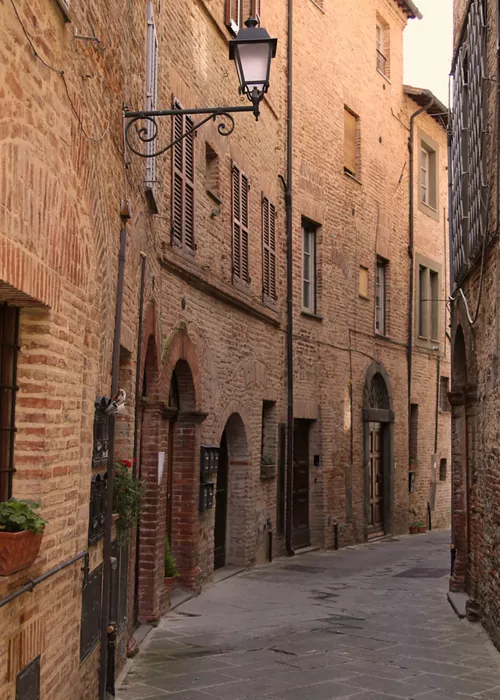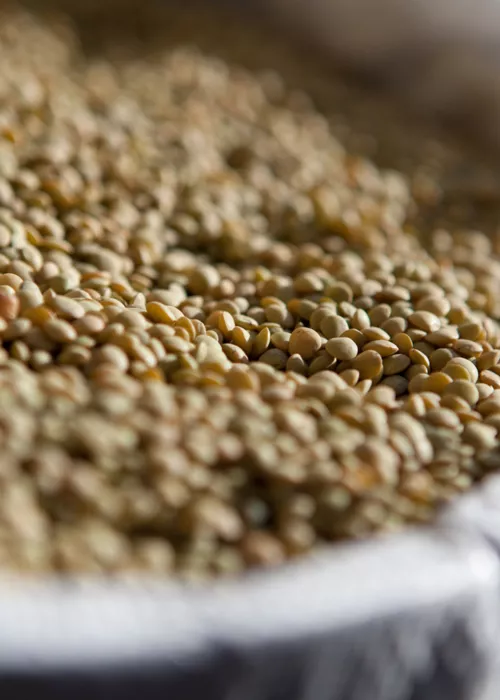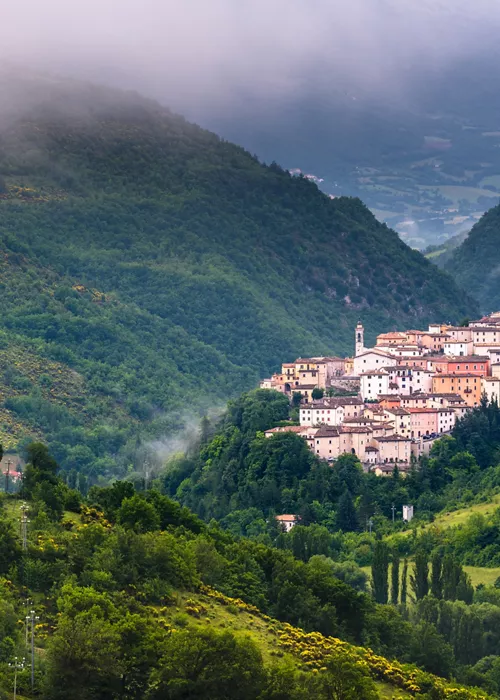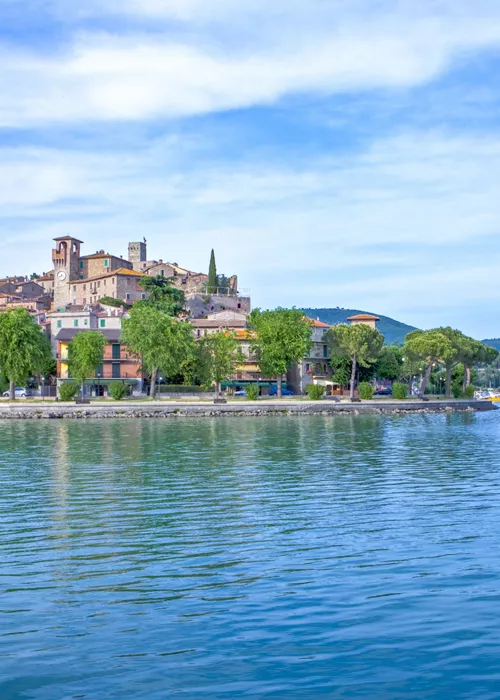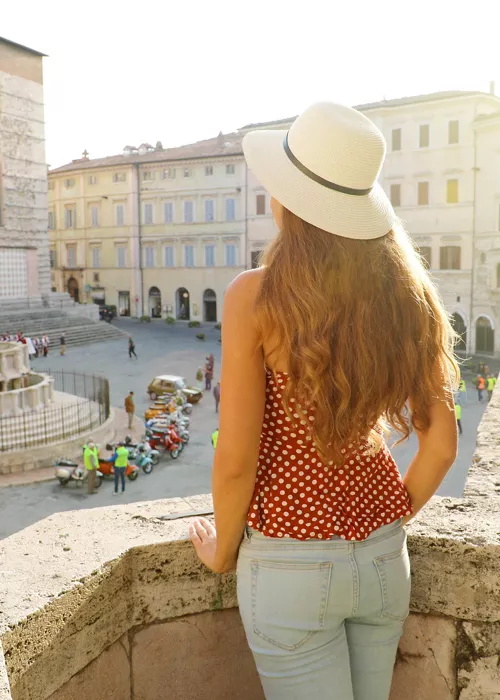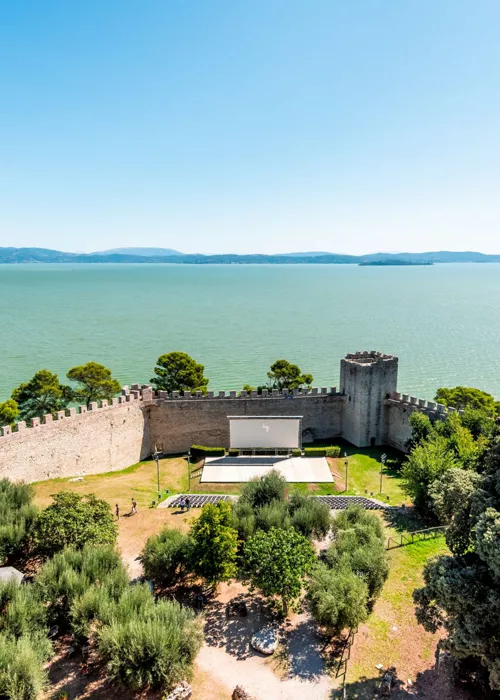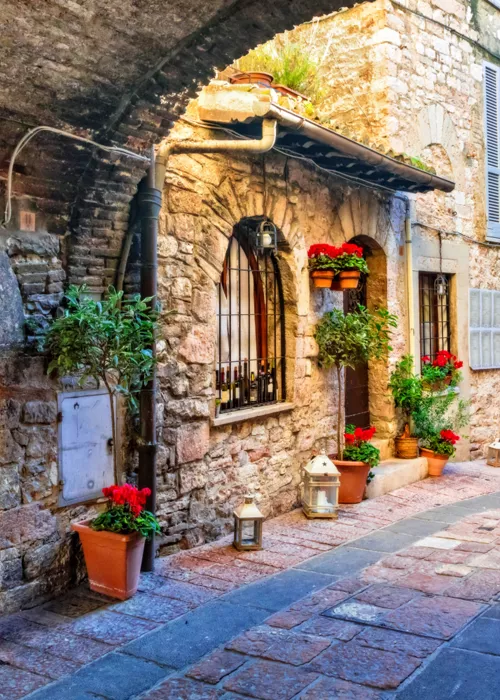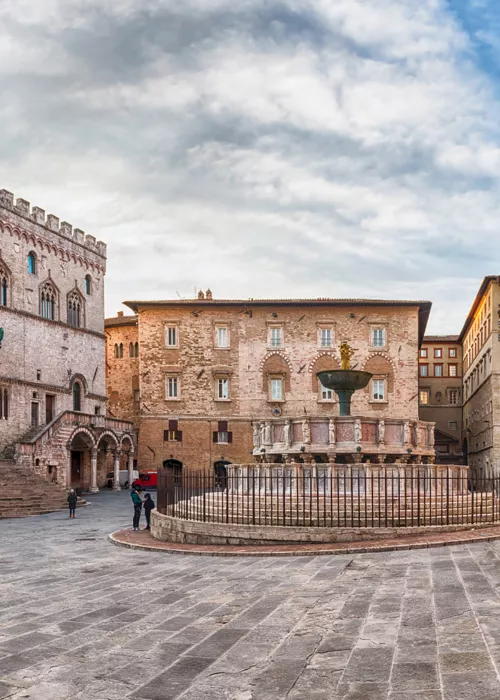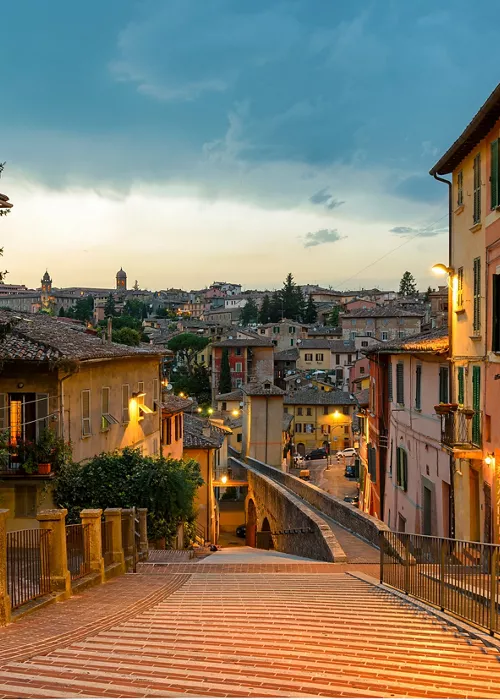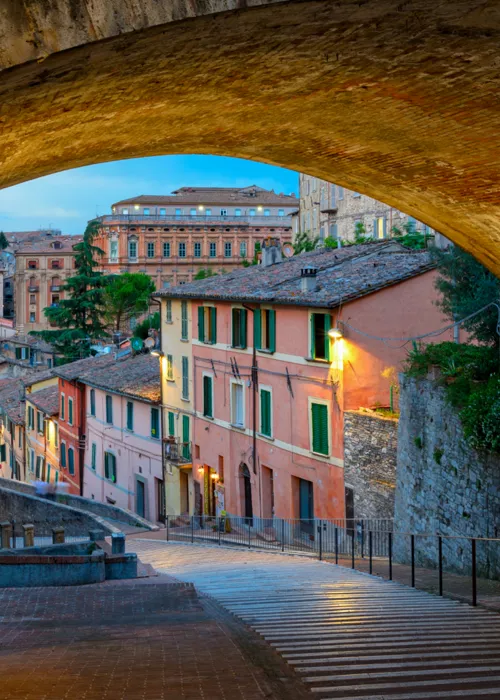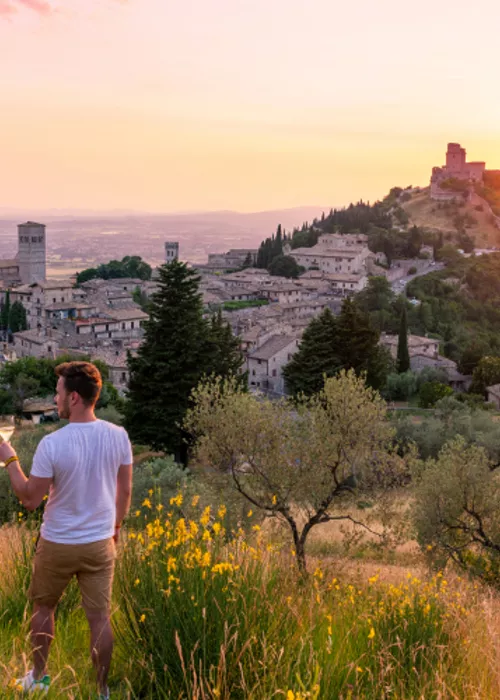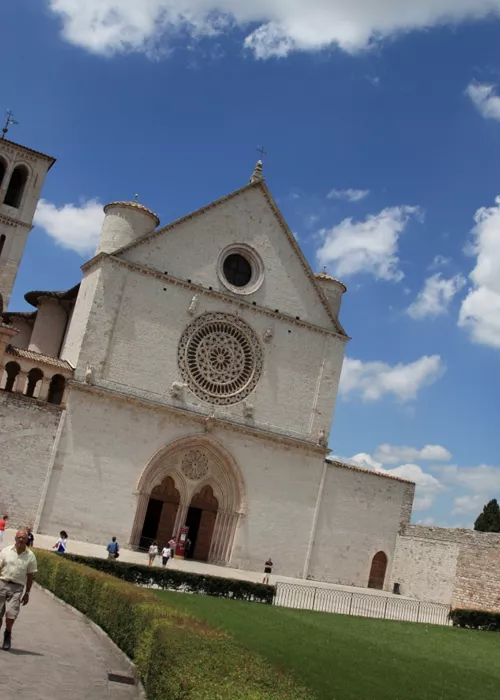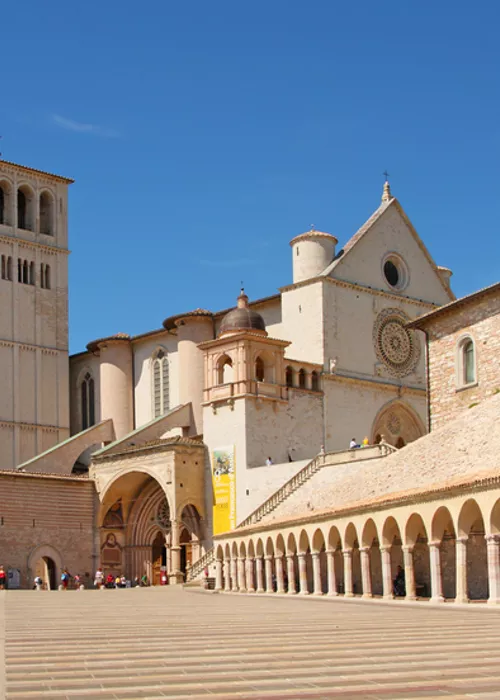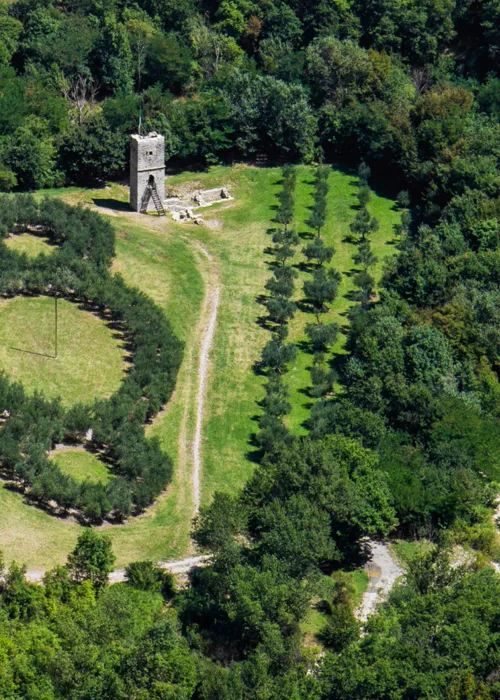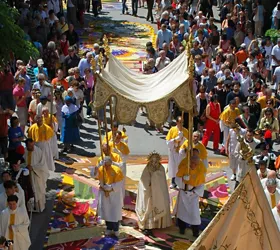Gubbio and the "Festa dei Ceri"
3 minutes
Index
Built on the slope of Mount Ingino and crossed by the Camignano stream, Gubbio is a magnificent Medieval Umbrian city full of history and monuments that have always fascinated illustrious travellers and authors the likes of Gabriele D’Annunzio and Hermann Hesse, according to whom the city “produces an absolutely stunning effect and has something unreal and perturbing about it”.
Gubbio
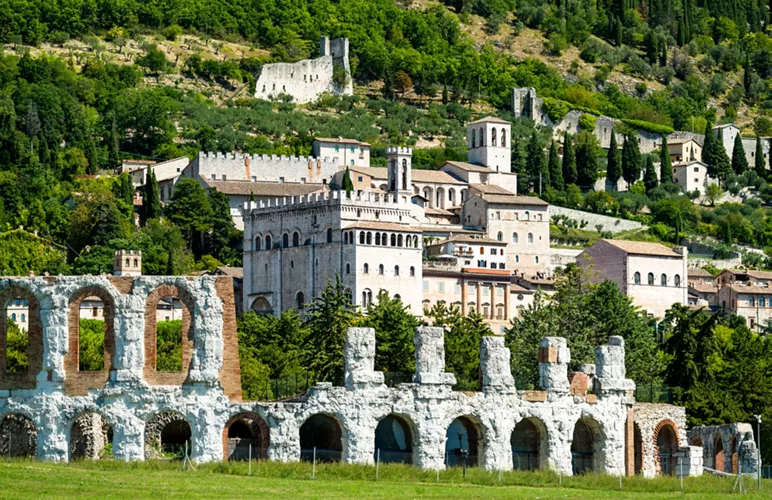
Proof of its ancient grandeur lies in the Iguvine Tablets dating back between the 3rd and the 1st centuries BC (seven bronze tablets written in the Umbrian language and considered one of the most important Italian documents, and housed in the Museo Civico), the ruins of the Roman theatre (end of the 1st century BC) just outside the city walls, and several finds from the Bronze Age. However, the Middle Ages are obvious in today’s city with its intact urban system dating back to the era of the communes, including monuments and the main material used: stone.
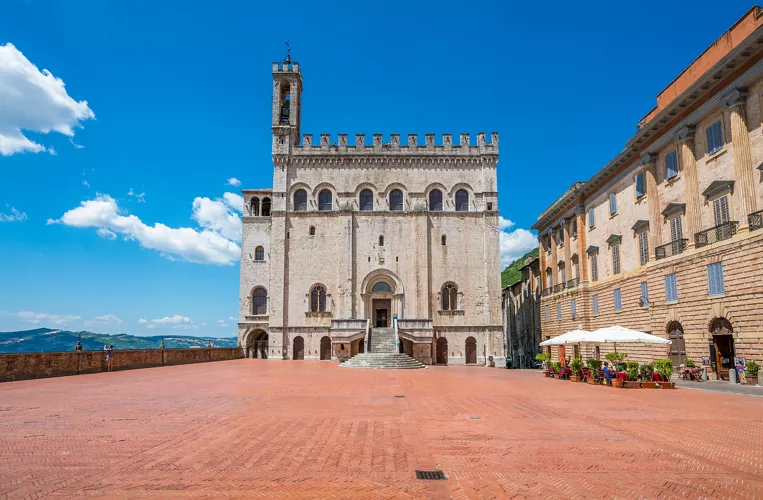
A tour through charming Gubbio absolutely has to start from the magnificent complex of Piazza Grande (end of the 15th century), also known as Piazza della Signoria , which encompasses the public palazzi and former seats of the two civilian magistracies: Palazzo dei Consoli, a majestic Gothic building completed around 1340 and home today to the Museum Civico, and Palazzo del Podestà, now the premises of the Town Hall.
It is also the site of the Ducal Palace, which was built by Francesco di Giorgio Martini for Federico da Montefeltro. The 6 gates leading out of the city are also worth seeing. The wall was built at the end of the 13th century and is nonetheless intact. Some of the gates still have fragments of painted decorations, the city’s coat of arms and even its old wooden doors. The Cathedral of Saints Mariano and Giacomo (13th-14th centuries) whose facade is decorated with the symbols of the Evangelists (eagle, lion, angel and bull) and its single nave (restored at the beginning of the 1900’s) are also of significant interest.
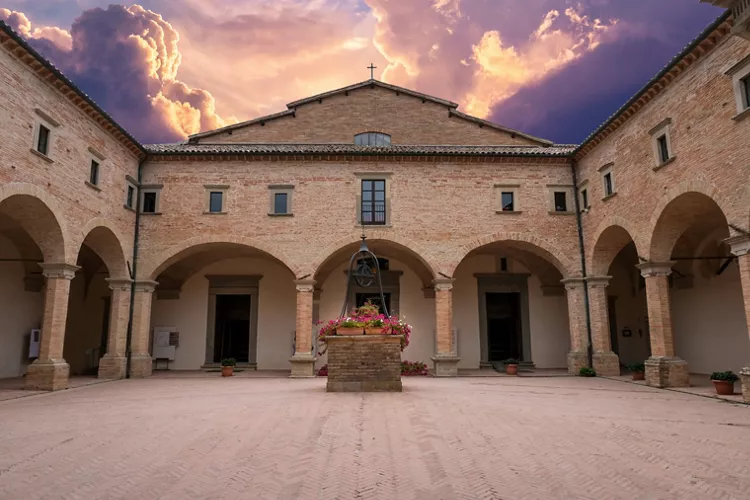
There are also the churches of S. Agostino, S. Domenico, S. Pietro e S. Giovanni and the church of S. Francesco (13th century), whose apses were painted by Nelli. Here, in the large piazza in the lower section of the city (where the market was once held), visitors can admire the Loggia dei Tiratori, which was built in 1603 by the corporation of wool weavers who used it as a drawing frame for their cloths. Lastly, a tour of Gubbio also has to include its surrounding area and the Bottaccione gorge, which is home to historical evidence from different periods, from a medieval aqueduct to the S. Ambrogio hermitage and the church of Vittorina (13th Century) built, according to the legend, in the place where St. Francis encountered the wolf of Gubbio.
Visitors should also tour the Basilica of Sant’Ubaldo, which is almost at the top of Mount Ingino and can be reached on a convenient aerial cableway. It preserves the intact body of the city’s patron saint and is where the ceri (candles) of Gubbio are kept.
La Festa dei Ceri
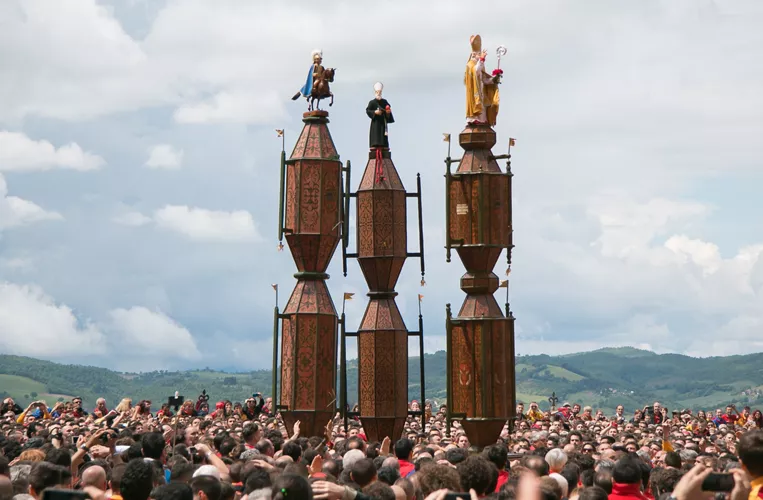
Si svolge ogni anno il 15 maggio, alla vigilia della festa del protettore Sant’Ubaldo. I Ceri sono tre alti e pesanti manufatti lignei sormontati dalle statue di Sant’Ubaldo (patrono dei muratori), di San Giorgio (protettore dei merciai) e di Sant’Antonio Abate (protettore degli asinari e dei contadini).
Essi vengono portati a spalla e di corsa per le vie della città fino alla Basilica di S.Ubaldo, sulla vetta del monte Ingino, dai ceraioli. Un suggestivo cerimoniale precede la corsa: In Piazza Grande, a mezzogiorno, ha luogo la spettacolare “alzata” dei Ceri e i loro tre giri della piazza. Dopo aver effettuato la “mostra” per le vie della città, vengono deposti in via Savelli fino al momento della corsa.
Nel pomeriggio inizia dal Duomo la processione con la statua di Sant’Ubaldo fino in cima a via Dante, ove il Vescovo benedice i Ceri, che iniziano così la loro corsa per le principali vie della città. Tornati in Piazza Grande compiono altri tre giri e arrivano alla Porta dell’Angelo ove inizia l’ascesa al monte Ingino.
I Ceri vengono deposti nella Basilica di Sant’Ubaldo, mentre le statuette dei tre Santi sono riportate in città tra canti e fiaccolate. La festa è forse riconducibile ad antichi riti propiziatori di primavera, ma solo il suo carattere cristiano e celebrativo in onore di Sant’Ubaldo è storicamente provato per via documentaria.

